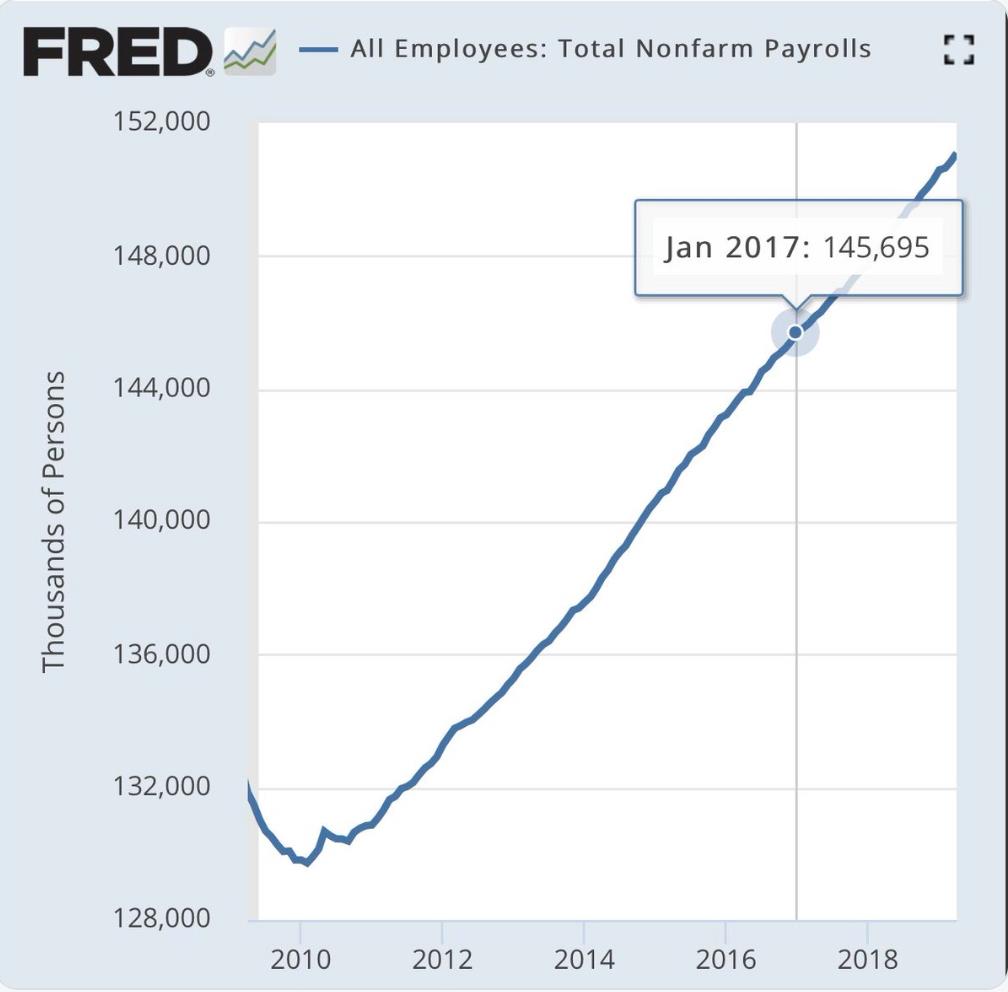According to census data, the US population in 2016 was 314,466,400. Of these Americans 171,280,200 were 35 or older and eligible to run for president. Yet the 243,396,993 Americans ages 18 and up and eligible to vote for president managed — with assists from James Comey, Mark Zuckerberg, and Vladimir Putin — to elect the single worst person in America president. And as The New York Times reported this week, Donald Trump is likely also the single worst businessperson in America. Between 1985 and 1994 he reported personal income tax losses of $1.17 billion — nearly $2 billion adjusted for inflation.
As Illinois’ Everett Dirksen, a Senate giant of the 1950s and 60s, once said at a budget hearing: “A billion here, a billion there, pretty soon you’re talking real money.”
Trump rushed to his own defense. Real estate developers in the 1980s and 90s, he tweeted, were entitled to huge write offs and depreciation: “You always wanted to show losses for tax purposes … almost all real estate developers did — and often renegotiate with banks, it was sport. Additionally, the very old information put out is a highly inaccurate Fake News hit job!”
In other words: 1) Of course I did it. Everyone did it. 2) It’s old news. 3) I didn’t do it.
But Russ Buettner and Susanne Craig of The Times found that Trump’s losses in those years dwarfed those of all other Americans, let alone all other Manhattan real estate developers: “Year after year,” they write, “Trump appears to have lost more money than nearly any other individual American taxpayer … and his core business losses in 1990 and 1991 — more than $250 million each year — were more than double those of the nearest [US] taxpayers.”
They also found that only a small portion of Trump’s massive losses over that decade resulted from depreciation and other tax write-offs.
Meanwhile his casinos bled money year-in, year-out even as the gaming industry took off, resulting in a string of Trump casino bankruptcies starting in 1990, and a close brush with personal bankruptcy as well.
It takes a special kind of idiot to go bankrupt running a casino. But without minimizing Trump’s unique buffoonery, even he may not be that inept a businessman. Consider the possibility he wasn’t in business to make money. More precisely, consider the possibility he wasn’t in business for his businesses to make money.
As journalist Craig Unger reports in his essential 2018 book House of Trump, House of Putin, since at least the early 1980s Trump has provided sketchy characters the world over with a service owners of casinos and high-end real estate are uniquely able to provide: the cleaning of dirty money. When Trump Tower opened in 1983, Trump was one of only two owners of Manhattan high-rises willing to sell units to anonymous buyers. As Unger recently put it in The Washington Post, “at least 13 people with known or alleged links to the Russian Mafia held the deeds to, lived in, or ran criminal operations out of Trump Tower in New York or other Trump properties … [and] many of them used Trump-branded real estate to launder vast amounts of money by buying multi-million-dollar condos through anonymous shell companies.”
THE NEW YORKER Meanwhile, in the last 20 years luxury real estate has become the investment of choice for gangsters and kleptocrats around the world who need to launder their ill-gotten gains. During this time Trump’s gone global, licensing his name to real estate projects and golf courses from Azerbaijan to the Republic of Congo to Indonesia and The Philippines — and of course, the countries of the former Soviet Union. As Adam Davidson writes:
Trump and his businesses [began] suffering a series of many watershed crises. All major banks except for Deutsche Bank refused to lend him money, his television program was sinking in the ratings, his casino business was in the midst of a humiliating collapse, and the lifeblood of his company — the steady transfer of cash from his father and then his father’s estate — had run out.
But, Davidson continues, that’s when the self-proclaimed “King of Debt” embarked on “an unprecedented spending spree, pouring hundreds of millions of dollars into several money-losing golf courses … This sudden windfall has never been clearly explained.”
Casinos are an even better and faster way to launder dirty money. Say you’re a former high school chemistry teacher looking to clean your profits from manufacturing meth. You can’t deposit that cash at your local bank branch. But you can walk into a casino, exchange your cash for chips, get a drink, make a few bets, then return your chips to the teller and leave with a cashier’s check you can deposit at your local bank branch and report as legal “gambling winnings”.
Of course there are rules in place to limit this and more elaborate schemes to launder money through casinos. But Trump’s casinos were always notoriously lax in following them. In 2015, Trump’s Taj Mahal admitted to willful violations of federal anti-money-laundering statutes for years, and was fined $10 million — the highest penalty ever against a casino.
You can lose lots of money owning a casino if you pay out phony gambling winnings to favored customers — or “known associates”, if you will. Maybe you even get a cut yourself — a profit for you, a loss for your business. This is a great way to launder money and personally profit if you don’t mind fleecing your investors, lenders, and vendors when you’re forced to declare bankruptcy.
Meanwhile, some of these “known associates” may also be vendors of your casino. These vendors you wouldn’t stiff. In fact, you might even overpay them. Maybe you get a cut of that, too. Again, a profit for you, a loss for your business. And a loss for your investors, lenders, and vendors when you declare bankruptcy.
This, by the way, is similar to how Fred Trump schemed to pass money on to Donald and his siblings without paying pesky estate taxes. As the same great reporters wrote in The Times last fall, Fred set up a company to supply his residential real estate empire with boilers, fridges, cleaning supplies, and other equipment at abnormally high prices — and made Donald and his other children owners of the company. Fred then used these unusually high prices to justify rent hikes for his rent-regulated apartments.
— — — — —
SLATE Mark Joseph Stern looks at Georgia’s extreme new “fetal heartbeat” law that effectively outlaws abortion after six weeks, before most women know they’re pregnant. It’s the most restrictive abortion law in the country. A woman who self-terminates would be considered to have committed murder and be subject to the death penalty. A woman who seeks an abortion from a health care provider would be considered a party to murder and subject to life in prison. A woman who leaves Georgia to get an abortion could be charged with conspiracy to commit murder, and subject to 10 years imprisonment. Someone who helps a woman plan an out-of-state trip to get an abortion, or who transports a woman out-of-state to get an abortion, would also be guilty of conspiracy to commit murder.
Georgia’s law also declares that “unborn children are a class of living, distinct person” that deserves “full legal recognition.” This means fetuses would be included in population counts and considered state residents. It also increases the size of the state’s inmate population. Pregnant inmates’ fetuses would not only be counted, but have separate, independent rights, including the right to due process.
Similar measures were signed into law earlier this year in Ohio, Kentucky, and Mississippi. They’re all intended to give the new five-member conservative US Supreme Court majority the opportunity to overturn Roe v. Wade.
THE NEW YORK TIMES Meanwhile, Pam Belluck, The Times’s health and science writer, examines what these new restrictive state abortion laws really mean for women.
¤
THE NEW YORK TIMES A plurality of Democrats say “electability” is their most important consideration in choosing a presidential candidate. It’s why Joe Biden has dominated in polls since he formally announced his candidacy. He’s widely perceived to be the most electable candidate running. If that perception lasts, he’ll be the Democratic nominee. But what does “electability” mean? Lisa Lerer offers five theories of what might make a candidate the most electable:
The “political revolution” theory: Energize the left with a strong economic message. Candidates: Bernie Sanders, Elizabeth Warren.
The “Obama coalition” theory: Mobilize the base. Boost African-American and Latino turnout to 2012 levels. Increase votes in places like Detroit and Philadelphia to win back states like Michigan and Pennsylvania Clinton lost. Candidates: Cory Booker, Kamala Harris.
The “Trump voters” theory: Win back white working-class Obama-Trump voters in the industrial Midwest. Candidates: Joe Biden, Amy Klobuchar, Tim Ryan, Kirsten Gillibrand.
The “moving map” theory: Change the map. Chart a different path to 270. Forget about Iowa and Ohio. Go after states like Arizona, Georgia, and Texas. Candidates: Beto O’Rourke, Julián Castro.
The “romance” theory: Win hearts, win votes, win the country. Policy and positions matter less than charisma and vision. Voters need to know that you understand them, and feel like they understand their candidate. [ed. note: Bonus points if you read and speak Norwegian.] Candidate: Pete Buttigieg.
Of course a winning candidate will try to run on more than one of these theories to build a coalition. For instance, Buttigieg also makes direct appeals “to the middle of the country.” And Biden wants to get the Obama coalition back together. So far he’s the clear favorite of older black voters. And this week a Morning Consult tracking poll of more than 15,000 Democratic primary voters found for the first time Biden leading Sanders 35% to 30% among younger black voters ages 18-to 29:

BUZZFEED An even more provocative challenge to the conventional wisdom on electability came this week from Kamala Harris. Speaking at the NAACP Convention in Detroit, Harris countered the view that equates electability with white candidates winning back the votes of white working class Rust Belt voters: “There has been a lot of conversation by pundits about ‘electability’ and who can speak to the Midwest. But when they say that, they usually put the Midwest in a simplistic box and a narrow narrative. And too often their definition of the Midwest leaves people out. It leaves out people in this room who helped build cities like Detroit. It leaves out working women who are on their feet all day — many of them working without equal pay.”
¤
VOX Washington governor and Democratic presidential candidate Jay Inslee is doing for climate policy what Elizabeth Warren is doing for, well, pretty much every other crucial issue facing the country as we head into 2020. David Roberts looks at Inslee’s ambitious, detailed proposals that, like Warren’s, will form the backbone of the party’s platform whoever winds up being the party’s nominee.
Transportation, electricity, and buildings contribute 70% of America’s climate pollution. Inslee’s plan builds on the 100%-clean energy bill Washington recently passed. It seeks to get the US to economy-wide net-zero emissions by 2045. It targets 100% clean new vehicles and clean new buildings by 2030, and 100% clean electricity by 2035. That’s not quite as fast as the Sunrise Movement activists behind the Green New Deal say we need to go. But Inslee’s plan is far more detailed than the so-far-mostly-aspirational GND, and gets there faster than any other proposal out there with meat on its bones.
It’s easy and fair to joke about the number of Democrats running for president with little to no chance of winning the nomination. But Inslee’s doing it the right way: owning and amplifying an issue of existential importance. And it’s not like there’s a hackish incumbent GOP Senator he could be challenging in his home state.
¤

THE NEW YORK TIMES Mimi Swartz profiles M.J. Hegar, who earned a Purple Heart and Distinguished Flying Cross while serving three tours as a medevac helicopter pilot in Afghanistan, came home and lost a close race for Congress in Texas last year, and is now gearing up to challenge Texas’ senior senator, John Cornyn, Mitch McConnell’s No. 2. Cornyn’s no Ted Cruz, and it’ll be an uphill fight. Swartz: “Yes, our major cities are blue and even once-red suburban counties are trending that way. But rural voters still turn out en masse, and their conservative values and beliefs still make statewide races a bitter and losing battle for gender equality.” Hegar produced what was easily last year’s best campaign video, “Doors,” in which she talked about her childhood dream of becoming a pilot and her later experiences “opening, pushing, and sometimes kicking through every door that was in my way.” Check it out.
¤
CHART OF THE WEEK New jobs numbers out this week underscore the remarkable job Trump has done turning around the economy since he took over from Obama:

Follow Steve Lichtman during the week on Twitter @stevel3000.


